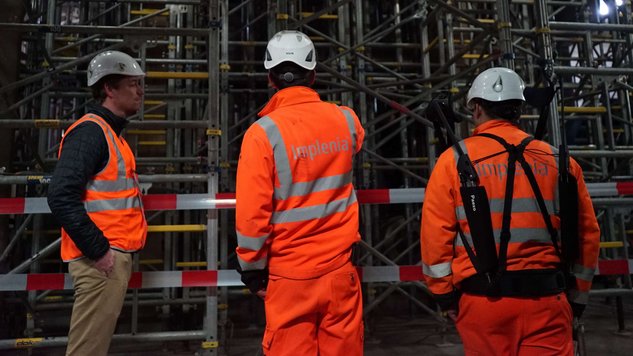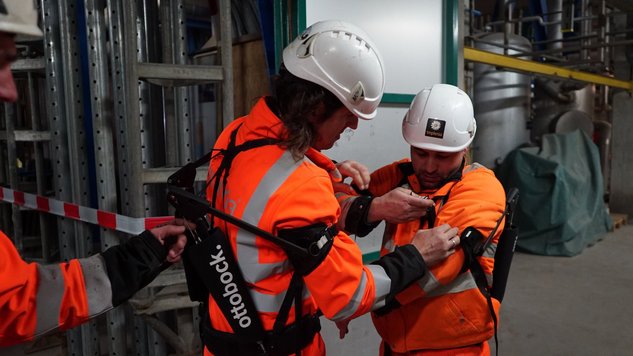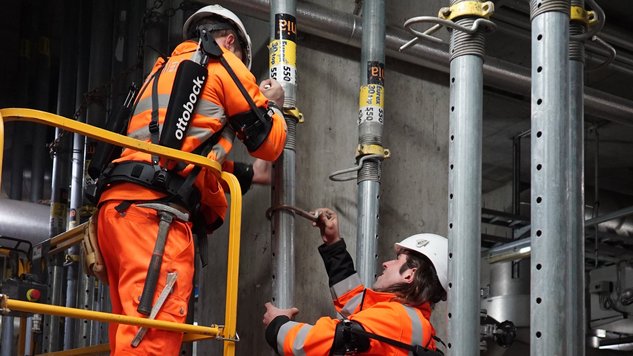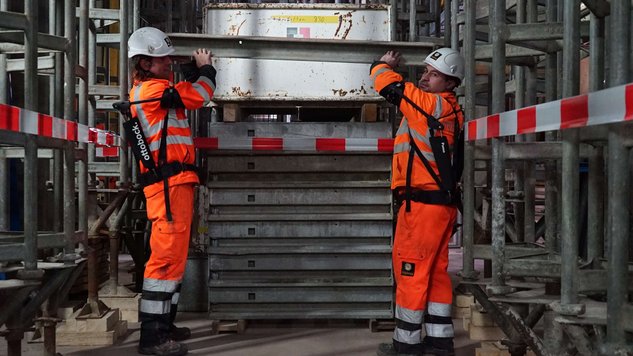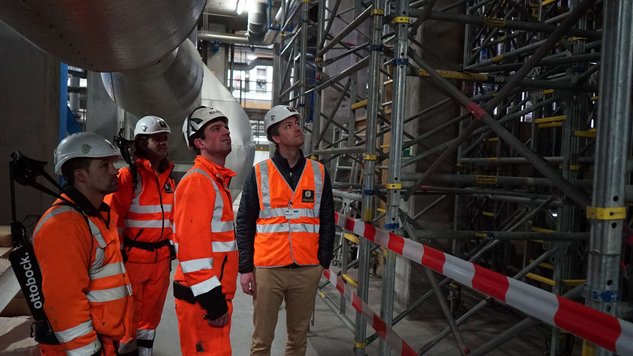Exoskeleton - Better ergonomics on construction sites

Implenia is open to new ideas and ready to learn from other industries. This is one of the reasons why the company has set up an Innovation Hub. The cross-divisional team at the Hub is responsible for evaluating promising ideas quickly, using a structured process to assess their practical worth in construction settings.
Innovation is not just about building faster and better. New technology can also contribute positively to employee welfare. In spring 2019, Implenia tested two “exoskeletons” – a new sort of health and safety device – on a construction site in Basel. The trial took place at a waste incineration plant where Implenia is working on an expansion project.
The exoskeleton looks a bit like a corset, and is strapped on like a rucksack, with additional fixings on the upper arm. A cable system supports the muscles and relieves strain on the back and shoulders when working above shoulder height: the weight of the arms and of the tool being used is transferred mechanically to the hips.
These mechanical helpers have already been in use in other sectors, including the car industry, for some years. They make strenuous hand movements above head height noticeably easier. Workers don’t tire so easily and can concentrate better, which also reduces the risk of accidents.
But the benefits felt on the production line are not completely transferable to the construction site. “Our trial showed that exoskeletons can be helpful for activities where the arm is at an angle of more than 60 degrees,” says Matthias Dalchow, Deputy Head of Project Excellence & Services Buildings Switzerland. But apart from drilling holes in the ceiling, there wasn’t much work during the trial that required this kind of posture. The main task in Basel was to put heavy-duty props in position.
When the two-week trial was over, workers filled in a questionnaire assessing the impact of this new technology on the site. The conclusions were mixed. “We’re not giving a general recommendation,” says Dalchow, “but depending on the nature of the activity, the use of exoskeletons makes sense.” In the meantime, various different areas of the company have expressed an interest. So it’s quite possible that more Implenia employees could soon be strapping on an artificial skeleton.

